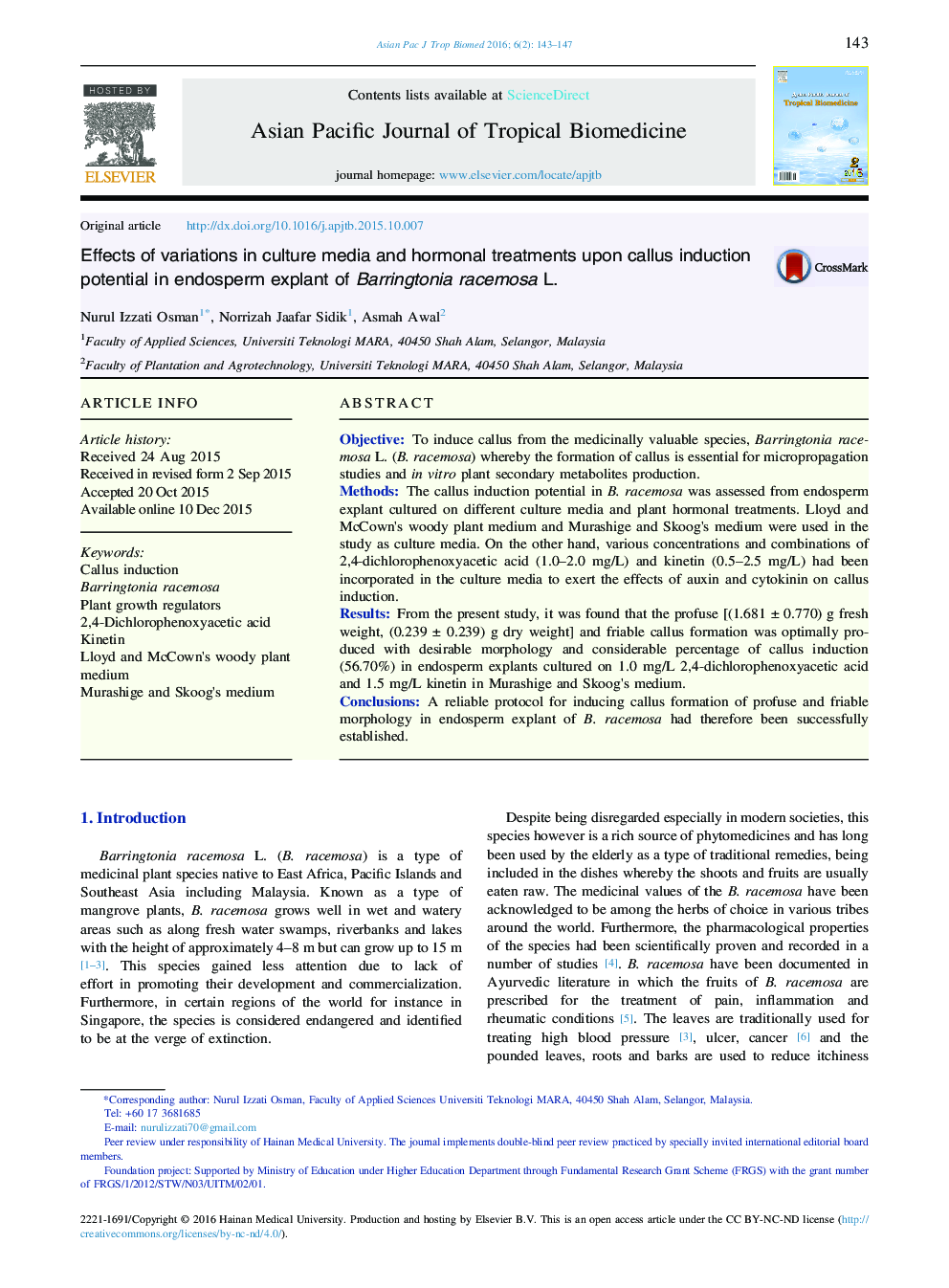| Article ID | Journal | Published Year | Pages | File Type |
|---|---|---|---|---|
| 2032353 | Asian Pacific Journal of Tropical Biomedicine | 2016 | 5 Pages |
ObjectiveTo induce callus from the medicinally valuable species, Barringtonia racemosa L. (B. racemosa) whereby the formation of callus is essential for micropropagation studies and in vitro plant secondary metabolites production.MethodsThe callus induction potential in B. racemosa was assessed from endosperm explant cultured on different culture media and plant hormonal treatments. Lloyd and McCown's woody plant medium and Murashige and Skoog's medium were used in the study as culture media. On the other hand, various concentrations and combinations of 2,4-dichlorophenoxyacetic acid (1.0–2.0 mg/L) and kinetin (0.5–2.5 mg/L) had been incorporated in the culture media to exert the effects of auxin and cytokinin on callus induction.ResultsFrom the present study, it was found that the profuse [(1.681 ± 0.770) g fresh weight, (0.239 ± 0.239) g dry weight] and friable callus formation was optimally produced with desirable morphology and considerable percentage of callus induction (56.70%) in endosperm explants cultured on 1.0 mg/L 2,4-dichlorophenoxyacetic acid and 1.5 mg/L kinetin in Murashige and Skoog's medium.ConclusionsA reliable protocol for inducing callus formation of profuse and friable morphology in endosperm explant of B. racemosa had therefore been successfully established.
